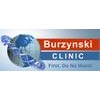Antineoplaston Therapy in Treating Children With Recurrent or Refractory High-Grade Glioma
High Grade Glioma

About this trial
This is an interventional treatment trial for High Grade Glioma focused on measuring childhood anaplastic astrocytoma, childhood glioblastoma multiforme
Eligibility Criteria
Inclusion Criteria: Histologically confirmed high-grade glioma (glioblastoma multiforme or anaplastic astrocytoma) that is recurrent or progressive or with residual tumor after standard therapy, including radiotherapy Measurable tumor by MRI scan performed within two weeks prior to study entry Male or female patients Children 6 months to 17 years Performance status: Karnofsky 60-100% Life expectancy of at least 2 months WBC greater than 1,500/mm^3 Platelet count greater than 50,000/mm^3 No evidence of hepatic or renal insufficiency and a total bilirubin and serum creatinine no greater than 2.5 mg/dL and SGOT/SGPT no greater than 5 times upper limit of normal Must have recovered from adverse effect of previous therapy At least 8 weeks elapsed since last dose of radiation At least 4 weeks elapsed since last dose of chemotherapy (6 weeks for nitrosoureas) Corticosteroids permitted using the smallest dose that is compatible with preservation of optimal neurologic function Acceptable methods of birth control (in females of child-bearing potential or in sexually active males)during and up to four weeks following completion of study Exclusion Criteria: Prior A10 and AS2-1 treatment Severe heart disease Uncontrolled hypertension Lung disease Hepatic failure Serious active infections, fever or other serious concurrent disease that would interfere with the evaluation of the treatment drug. Pregnant or nursing Serious concurrent disease Concurrent antineoplastic or immunomodulatory agents
Sites / Locations
- Burzynski Clinic
Arms of the Study
Arm 1
Experimental
Antineoplaston therapy
Antineoplaston therapy (Atengenal + Astugenal) by IV infusion every four hours for at least 12 months. Study subjects receive increasing dosages of Atengenal and Astugenal until the maximum tolerated dose is reached.
Outcomes
Primary Outcome Measures
Secondary Outcome Measures
Full Information
1. Study Identification
2. Study Status
3. Sponsor/Collaborators
4. Oversight
5. Study Description
6. Conditions and Keywords
7. Study Design
8. Arms, Groups, and Interventions
10. Eligibility
12. IPD Sharing Statement
Learn more about this trial
